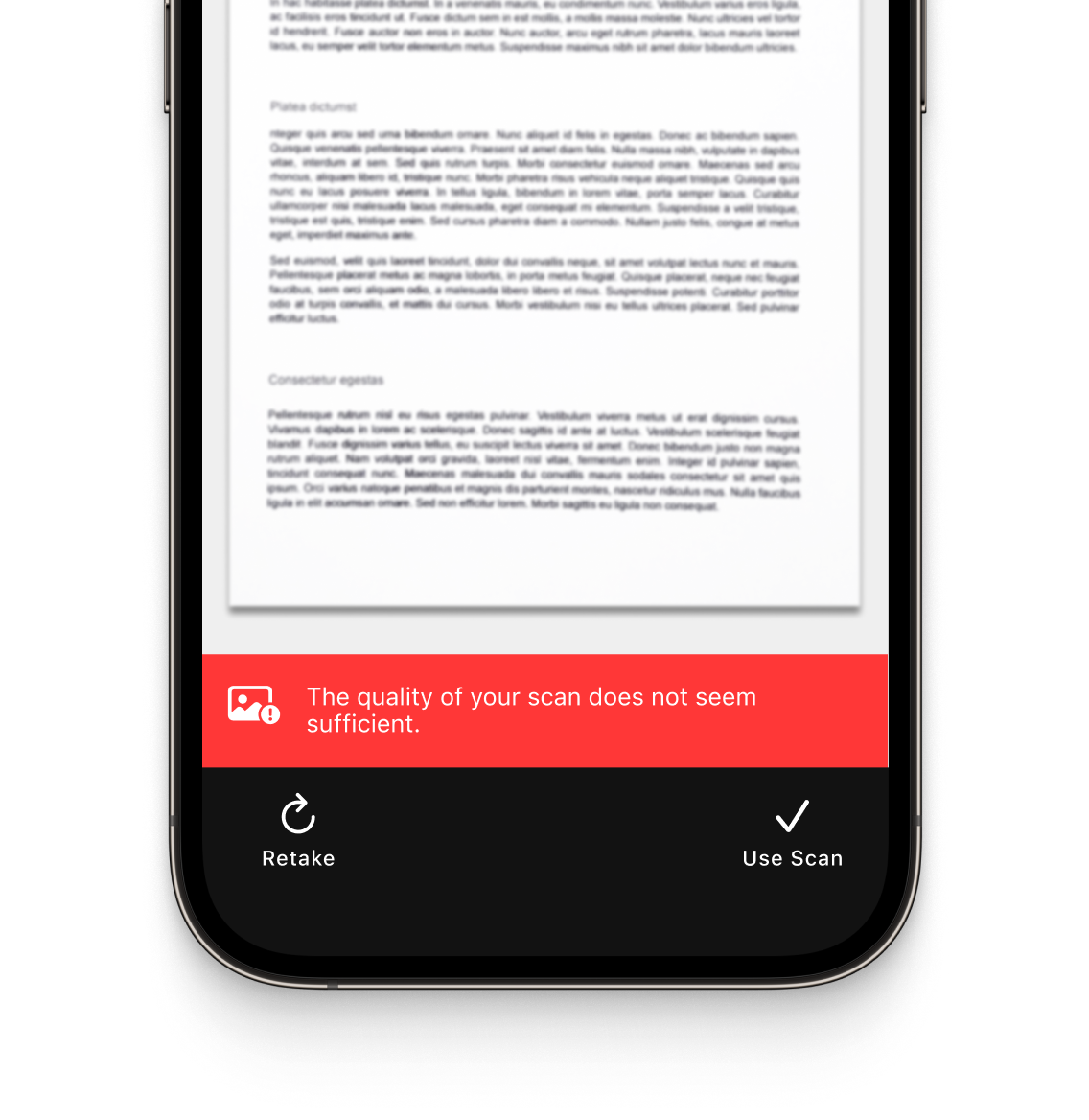In the banking industry, efficient document management is crucial. Bank operations depend on accurate and fast document processing, from customer IDs to loan applications.
Yet all too often, data entry and document processing are still done by hand. This means high error rates and slow workflows, driving up operational costs and hurting the customer experience.
Here is where OCR comes into play. Modern OCR software enables even ordinary smartphones to accurately scan a variety of documents. The extracted text is machine-readable – perfect for further automatic processing.
In this article, you will learn how OCR works and where you can use it to streamline banking operations.
What is OCR?
Put simply, Optical Character Recognition (OCR) converts images of text into machine-readable data.
This is different from a simple document scan, which only produces a digital image of the document, however faithful. Humans can read these – but machines cannot.
OCR is what converts the content of the document into a digital text format that computers can actually understand and process. This, for example, produces PDFs that look like the original, but are also searchable and can be copied and pasted from.
Modern OCR software also enables automated data entry. These solutions extract text items and return them as key-value pairs. The extracted data can then be processed automatically by backend systems.
How does it work, though?
The OCR process generally involves several steps. First, the physical document is scanned – nowadays often via smartphone camera – and optimized for OCR. Next, the OCR engine analyzes the scanned document to detect the individual lines, words, and characters. Modern OCR solutions utilize neural networks for this step to achieve superior pattern recognition. They reliably recognize text even in challenging conditions, such as low lighting, shadows, skewed text, or poor print quality.
After the text has been extracted from the input image, it can easily be processed further. OCR has transformed a plain picture of text into machine-readable data – data that can now be searched and processed automatically.
Benefits of OCR in banking
OCR technology is the perfect fit for applications that involve document management – like banking operations. From account set-up documents to transaction documents, the industry is built on processing a variety of documents. Managing them effectively is crucial for operational efficiency.
Using OCR-based document processing in banking operations has several major benefits:
- Improved efficiency and speed: Replacing manual data entry with OCR shortens processing time. This lets banking employees focus on other tasks, such as customer service.
- Increased accuracy: Automated OCR-based document processing is more accurate. Humans make mistakes, especially under time pressure.
- Enhanced customer experience: Streamlining customer-related workflows with OCR lets bank employees deliver better customer service. Customer onboarding, for instance, can be sped up by automatically capturing data from ID documents and address proofs. This gives the bank advisor more time to discuss the customer’s case, enhancing satisfaction and loyalty.
- Scalability and flexibility: As banks grow, OCR solutions easily handle the increasing document volume. Mobile OCR software with a flat-pricing model can be deployed on as many devices as needed.
Use cases for OCR in banking
In a document-heavy industry like banking, OCR technology has endless applications. Its versatility makes it the perfect tool for the following use case, in particular.
Automated customer onboarding
When customers open an account, banks need to process information from documents such as ID cards, passports, driver’s licenses, and address proofs. OCR technology can extract the data from these documents near-instantly, considerably easing the workload for bank employees. OCR speeds up identity verification and account activation, resulting in a streamlined, customer-friendly onboarding process.
Efficient loan processing
Before they grant a loan, banks usually require a slew of documents from the applicant. The application forms have to be filled out with personal and financial details – details that also appear on the ID documents and income verification documents. Here, OCR technology saves effort by automating the pre-filling of the loan application forms.
Simple check processing
Paper checks are still a popular payment method. Modern processes, though, often digitize paper checks, as in check truncation. With OCR technology, bank staff and customers can simply scan and upload checks.
Document management and archiving
Since OCR transforms documents into a machine-readable digital format, employees can search and retrieve relevant documents dramatically faster and access them from virtually anywhere. Naturally, digitized documents also take up less physical space.
Mobile banking apps
Though customers still value personal consultations in banks, mobile banking apps are increasingly popular. By integrating OCR functionality into their mobile applications, banks can streamline a whole range of operations. Instead of delivering documents in person, customers can simply upload them. The same goes for check processing.
There are some conditions, however: Customer-facing applications must provide a fast and satisfactory scanning experience, supported by a user-friendly design. They should also provide user guidance and QA features to ensure that even novice users can create high-quality scans as necessary.
Mobile OCR scanners in banking
The Scanbot Document Scanner SDK delivers advanced OCR software that turns any smartphone or tablet into a powerful bank document scanner – no costly dedicated devices needed.
Features such as user guidance, automatic capture, and automatic cropping ensure high-quality scan results, while the Scanbot SDK Document Quality Analyzer prevents low-quality scan submissions. All this ensures accurate OCR results.

The SDK works entirely offline, without any server connections, and so protects highly sensitive data. Thanks to our pricing model – unlimited scans and devices at a flat fee – it also scales effortlessly.
By integrating the Scanbot Document Scanner SDK into its mobile app, our customer Laboremus cut account opening times from 3 days to 3 minutes.
And VakıfBank streamlined customer document transmission by adding the Scanbot Document Scanner SDK to their client-facing app, eliminating waits and significantly improving the customer experience.
Contact us at sdk@scanbot.io if you want to learn more about our solutions.



